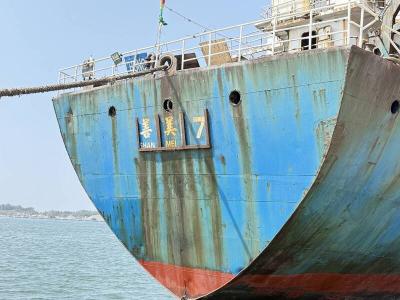Nine universities in Taiwan ranked among Asia’s top 100 universities in a listing by the UK newspaper the Times. However, they lagged far behind universities in Hong Kong, which took the majority of spots in the top five, the report showed yesterday.
National Taiwan University (NTU) had the best performance among the nine Taiwanese universities, coming in 22nd in the QS Asian University Rankings 2009, followed by National Tsing Hua University and National Cheng Kung University at 40th and 43rd, respectively.
The other six universities were National Yang Ming University at 47th, National Sun Yat-sen University at 71st, National Taiwan University of Science and Technology at 72nd, National Chiao Tung University at 74th, National Central University at 77th and Chang Gung University at 91st.
Universities in Hong Kong and Japan generally ranked better than universities in other countries, with University of Hong Kong, Chinese University of Hong Kong and Hong Kong University of Science and Technology taking first, second and fourth place in the rankings.
Japan’s University of Tokyo, Kyoto University and Osaka University ranked third, fifth and sixth, respectively.
NTU spokesman Sebastian Liao (廖咸浩) said the Times’ rankings focused on universities’ reputation, but sthe NTU cared more about the evaluation by Shanghai Jiao Tong University and the Higher Education Evaluation and Accreditation Council of Taiwan (HEEACT) because they were “more objective.”
“NTU always ranks first among universities in Taiwan, Hong Kong and China in the university rankings by Shanghai Jiao Tong University and the rankings by the HEEACT,” Liao said.

An undersea cable to Penghu County has been severed, the Ministry of Digital Affairs said today, with a Chinese-funded ship suspected of being responsible. It comes just a month after a Chinese ship was suspected of severing an undersea cable north of Keelung Harbor. The National Communications and Cyber Security Center received a report at 3:03am today from Chunghwa Telecom that the No. 3 cable from Taiwan to Penghu was severed 14.7km off the coast of Tainan, the Ministry of Digital Affairs said. The Coast Guard Administration (CGA) upon receiving a report from Chunghwa Telecom began to monitor the Togolese-flagged Hong Tai (宏泰)

EVA Air is prohibiting the use of portable chargers on board all flights starting from Saturday, while China Airlines is advising passengers not to use them, following the lead of South Korean airlines. Current regulations prohibit portable chargers and lithium batteries from check-in luggage and require them to be properly packed in carry-on baggage, EVA Air said. To improve onboard safety, portable chargers and spare lithium batteries would be prohibited from use on all fights starting on Saturday, it said. Passengers are advised to fully charge electronic devices before boarding and use the AC and USB charging outlets at their seat, it said. South

WAR SIMULATION: The developers of the board game ‘2045’ consulted experts and analysts, and made maps based on real-life Chinese People’s Liberation Army exercises To stop invading Chinese forces seizing Taiwan, board gamer Ruth Zhong chooses the nuclear option: Dropping an atomic bomb on Taipei to secure the nation’s freedom and her victory. The Taiwanese board game 2045 is a zero-sum contest of military strategy and individual self-interest that puts players on the front lines of a simulated Chinese attack. Their battlefield game tactics would determine the theoretical future of Taiwan, which in the real world faces the constant threat of a Chinese invasion. “The most interesting part of this game is that you have to make continuous decisions based on the evolving situation,

Actor Lee Wei (李威) was released on bail on Monday after being named as a suspect in the death of a woman whose body was found in the meeting place of a Buddhist group in Taipei’s Daan District (大安) last year, prosecutors said. Lee, 44, was released on NT$300,000 (US$9,148) bail, while his wife, surnamed Chien (簡), was released on NT$150,000 bail after both were summoned to give statements regarding the woman’s death. The home of Lee, who has retreated from the entertainment business in the past few years, was also searched by prosecutors and police earlier on Monday. Lee was questioned three